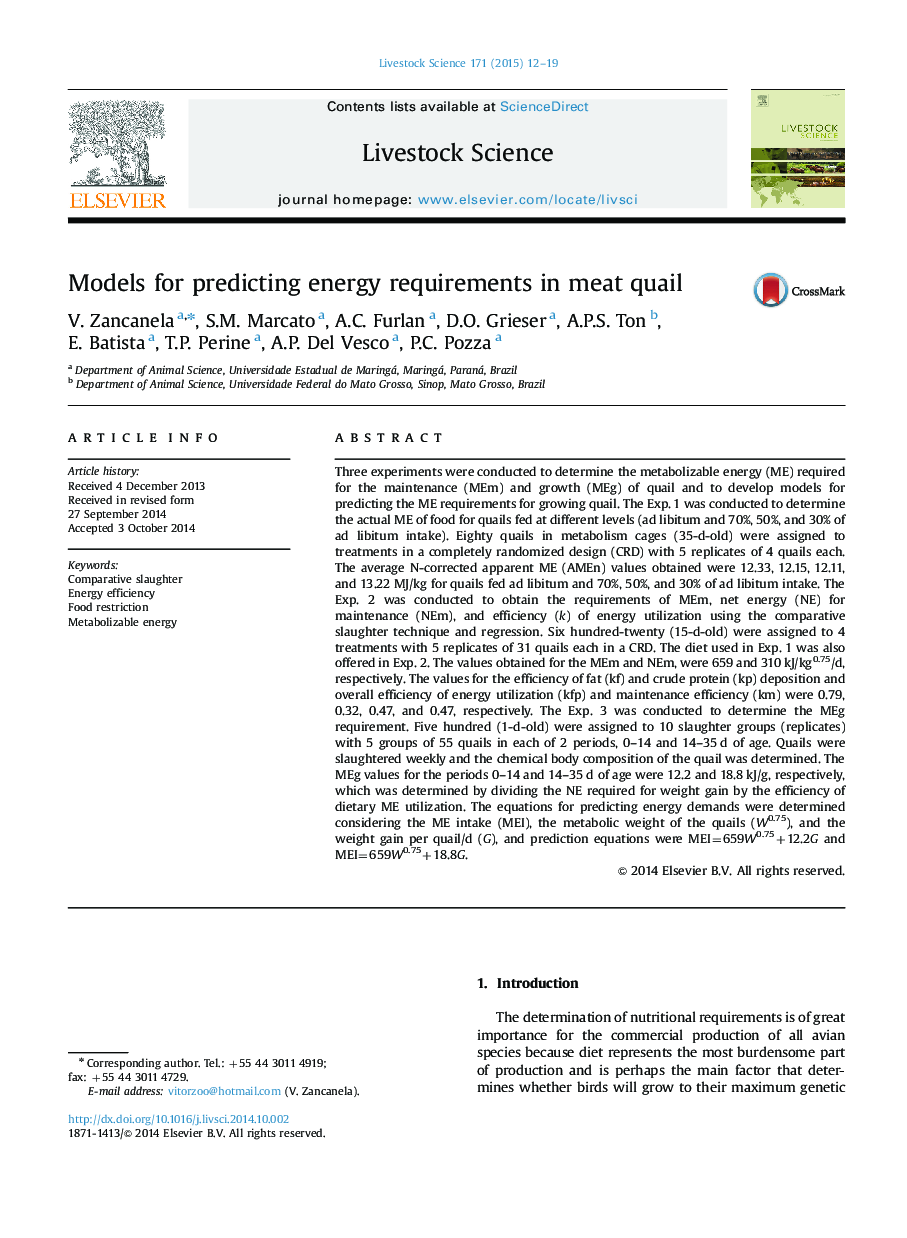| کد مقاله | کد نشریه | سال انتشار | مقاله انگلیسی | نسخه تمام متن |
|---|---|---|---|---|
| 2447188 | 1553961 | 2015 | 8 صفحه PDF | دانلود رایگان |
• In this study maintenance and growth metabolizable energy required was observed.
• Equations were developed for predicting the ME requirements for quail.
• The equation for 1–14 day-old quail was MEI=658.5W0.75+12.2G.
• The equation for 15–35 day-old quail was MEI=658.5W0.75+18.8G.
Three experiments were conducted to determine the metabolizable energy (ME) required for the maintenance (MEm) and growth (MEg) of quail and to develop models for predicting the ME requirements for growing quail. The Exp. 1 was conducted to determine the actual ME of food for quails fed at different levels (ad libitum and 70%, 50%, and 30% of ad libitum intake). Eighty quails in metabolism cages (35-d-old) were assigned to treatments in a completely randomized design (CRD) with 5 replicates of 4 quails each. The average N-corrected apparent ME (AMEn) values obtained were 12.33, 12.15, 12.11, and 13.22 MJ/kg for quails fed ad libitum and 70%, 50%, and 30% of ad libitum intake. The Exp. 2 was conducted to obtain the requirements of MEm, net energy (NE) for maintenance (NEm), and efficiency (k) of energy utilization using the comparative slaughter technique and regression. Six hundred-twenty (15-d-old) were assigned to 4 treatments with 5 replicates of 31 quails each in a CRD. The diet used in Exp. 1 was also offered in Exp. 2. The values obtained for the MEm and NEm, were 659 and 310 kJ/kg0.75/d, respectively. The values for the efficiency of fat (kf) and crude protein (kp) deposition and overall efficiency of energy utilization (kfp) and maintenance efficiency (km) were 0.79, 0.32, 0.47, and 0.47, respectively. The Exp. 3 was conducted to determine the MEg requirement. Five hundred (1-d-old) were assigned to 10 slaughter groups (replicates) with 5 groups of 55 quails in each of 2 periods, 0–14 and 14–35 d of age. Quails were slaughtered weekly and the chemical body composition of the quail was determined. The MEg values for the periods 0–14 and 14–35 d of age were 12.2 and 18.8 kJ/g, respectively, which was determined by dividing the NE required for weight gain by the efficiency of dietary ME utilization. The equations for predicting energy demands were determined considering the ME intake (MEI), the metabolic weight of the quails (W0.75), and the weight gain per quail/d (G), and prediction equations were MEI=659W0.75+12.2G and MEI=659W0.75+18.8G.
Journal: Livestock Science - Volume 171, January 2015, Pages 12–19
